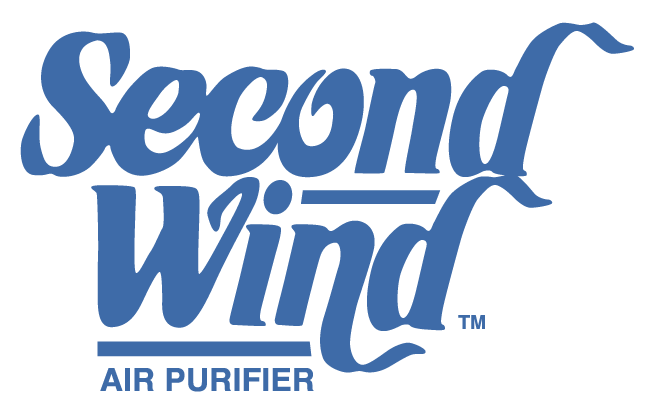UV Light Purification Help Topics
For Tech Support call (866) 476-5101. Be sure to have your model and serial numbers, along with the date of installation ready.
Technology
- What does a UV Air Purifier do?
- What is the difference between UV Air Purifiers and air filtration?
- What is it about the PCO technology that makes it especially effective?
- Why would I want to install a UV light?
- Can you help me understand the difference between UV-A, UV-B, and UV-C rays?
Maintenance
Miscellaneous
- What does the CDC say about UV Light Treatment?
- Do UV Air Purifiers produce increased ozone?
- Is UV Light harmful?
What does a UV Air Purifier do?
UV (Ultraviolet) Air Purifiers utilize ultraviolet light to reduce mold and mildew, VOC's, airborne pathogens, flu, germs, bacteria, viruses, and other harmful airborne contaminants. Some models also reduce odors from the home caused by garbage, hobbies, cooking, etc. UV Air Purifiers are an effective option for people with respiratory concerns as they reduce allergy and asthma triggers. In fact, studies have shown that UV lights lessen fungal contamination within air-handling units.
What is the difference between UV Air Purifiers and air filtration?
Both products are effective at decreasing harmful elements from the air, but UV Air Purifiers focus on removing airborne germs, bacteria and mold while filtration focuses on removing harmful particulates that become airborne.
What maintenance does a UV Air Purifier require?
Your UV Air Purifier requires little maintenance. Simply replace the lamp once per year or once every two years depending on the model. IMPORTANT: Remember to power off your purifier before replacing the lamps and do not look directly at a lamp that is powered on. When replacing lamps, do not touch the glass with your skin. Use a tissue or gloves to handle.
What does the CDC say about UV Light Treatment?
The CDC currently recommends UV lights to reduce transmission of tuberculosis in hospitals. Together the National Institute for Occupational Safety & Health (NIOSH), the Department of Health & Human Services (DHHS) and the CDC wrote a manual for effective UV light installation; recommending UVGI (Ultra Violet Germicidal Irradiation) light technology to inactivate airborne TB bacteria.
Do UV Air Purifiers produce increased ozone?
EPA: According to two studies, operating UV lamps installed in HVAC systems to irradiate the surfaces of air-handling units does not result in increased concentrations of ozone.
Is UV Light harmful?
UV light can be harmful just as the sun's UV light can be when someone is exposed for too long a time. One should neither look at or touch a UV light bulb while it is on for any length of time. Fortunately, when the UV light system is installed in your HVAC system (within the walls of your duct), there is no direct or harmful exposure to you or your family. Remember to power off your purifier before replacing the lamps and do not look directly at a lamp that is powered on. When replacing lamps, do not touch the glass with your skin. Use a tissue or gloves to handle.
Can you help me understand the difference between UV-A, UV-B & UV-C rays?
- UV-A: The longest of the three; at 315 to 400 nanometers (nm). nm = 1 billionth of a meter. UV-A rays penetrate furthest into the epidermis and dermis (deepest layers) of your skin and make up 95% of UV radiation. They are associated with skin aging. UV-A rays can penetrate through glass.
- UV-B: Strongest between 10:00 am and 4:00 pm, UV-B rays are between 280 and 315 nm. UV-B rays are associated with skin burning. Both UV-A and UV-B rays can lead to genetic defects, or mutations, that can lead to cancer. Cannot penetrate through glass.
- UV-C: The shortest and most dangerous of the three (between 100 and 280 nm), these rays are blocked by the Earth's atmosphere. UV-C rays are those utilized in UV Air Purifiers, as they transmit the most energy and have the greatest potential to damage and kill bacteria and viruses. Often known as ultraviolet germicidal irradiation (UVGI) it's been an established means of preventing the spread of infectious diseases.


What is it about the PCO technology that makes it especially effective?
Photocatalytic Oxidation is an effective way to neutralize many types of airborne bacteria, chemical contaminates and odors. Photocatalytic oxidation is achieved when you combine UV rays (from the UV lamp) with a TiO2-coated surface (Titanium Dioxide). This process creates hydroxyl radicals and super-oxide ions, which are highly reactive electrons.
Titanium dioxide (TiO2), is a well-known metal oxide with photocatalytic properties that has been incorporated into non-woven filtration fabrics to aid in degradation of volatile organic compounds (Park et al., 2006). In this system, the metal oxides act as a photocatalyst in the presence of UV light.
Once bound together, the chemical reaction takes place between the super-charged ion and the pollutant, effectively "oxidizing" (or burning) the pollutant. This breaks the pollutant down into harmless carbon dioxide and water molecules, purifying the air.
In a study commissioned by the U.S. Department of Energy, scientists found that photocatalytic oxidation converted more than 95% of harmful VOC chemicals to harmless carbon dioxide and water molecules.
Why would I want to install a UV light?
UV lights significantly reduce the amount of microbials in ductwork, on coils, and airspace in your home. UV lights reduce viruses, germs and bacteria that can travel throughout the home. The 1903 Nobel Prize for Medicine was awarded to Niels Finsen for his use of UV against lupus vulgaris, tuberculosis of the skin. Using UV lights to treat water dates back to 1916 in the USA. Today UV light is used to treat drinking water, waste water and indoor air.







